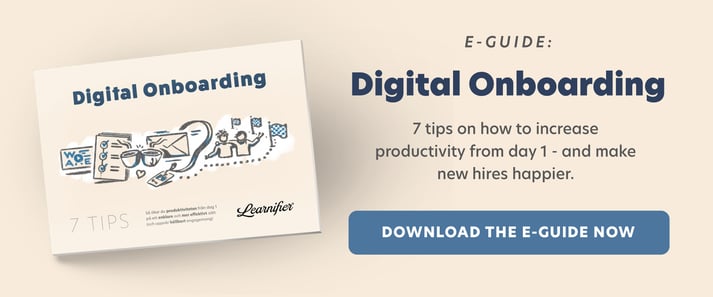The paperwork is done, and the negotiation process has finally come to an end. You can now relax. Well, maybe if you are the hiring manager, but probably not if you work within HR. The time between the actual recruitment and day 1 is often a few months long. During this period, many companies assign HR managers to pre-board the new by personally communicating with them regularly and sharing important preparatory information with them. This work requires a lot of time and effort but can be made efficient. By digitizing the interaction and automating certain functions, you can minimize your workload immensely. Sounds great, right? Well, according to HRDive the pre- and onboarding programs are actually the most effective when personalized. So how could we utilize our digital platform in a time-efficient manner (using automation), without losing a personal touch?
Sort Out The Generic
The question is; how do we leverage our digital tool in a way that encompasses the practical and the personal? Firstly, let’s start by identifying what parts of our pre- and onboarding programs best function as automated outputs. Ask yourself: ”Which parts of our processes are generic, and benefit all new hires?” Maybe there is a document informing all new recruits about the company’s core
Add The Personal
Address Your Colleagues By Name
A great and simple way to individualize your digital interaction with your colleague is to
Incorporate A Progression Plan
There is likely a lot of information that the new employee will be able to take part in on your digital platform. This can be seen as either overwhelming and daunting, or exciting and a great opportunity for exploration. How do we make sure that users experience the
Create Space For Socialising and Co-creating
Many digital platforms, Learnifier included, allows users to interact with their colleagues digitally. Even at the pre-boarding stage, new staff members can chat with other new recruits, seniors and their individual supervisor. This allows for a healthy workplace environment
In recent years, the question has changed from “should we automate?” to “what should we automate?”. In today’s world where information is key and we are constantly learning and developing partial automatization has become a must to be able to pre- and onboard successfully. It is virtually impossible to consistently and successfully interact with new colleagues manually. By following the tips mentioned above, you can minimize your workload by incorporating automatization without

.png?width=153&height=58&name=Learnifier%20TextLogo%20NearBlack%20-%20PNG%20MEDIUM%20-%20800px%20(2).png)





